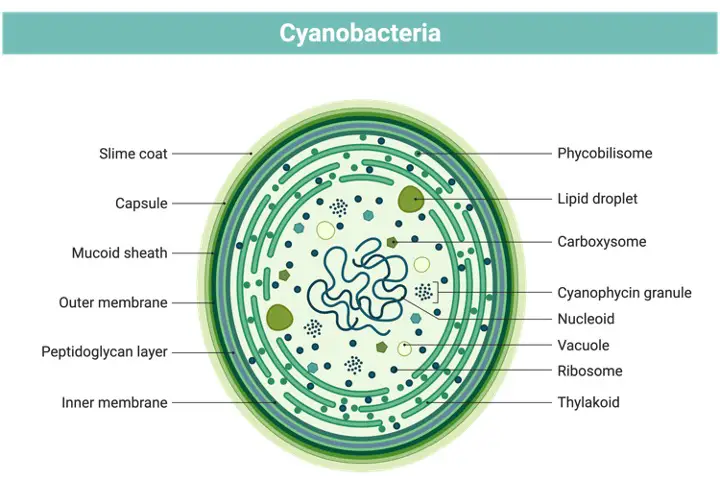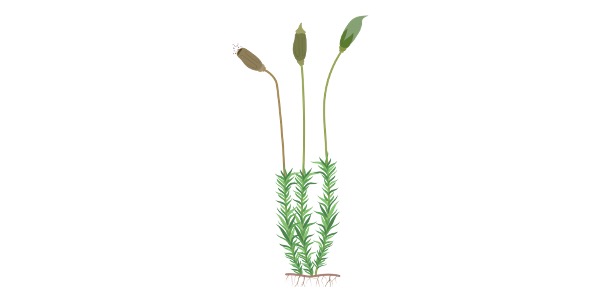Table of Contents
Algae Definition
Algae (singular: alga) are photosynthetic creatures that belong to the Eucarya Domain. They vary from vascular plants in that they lack real roots, stems, and leaves.
Etymology: The word algae comes from the Latin word alga, which means “seaweed.” Algal is a descriptive term that refers to, describes, or describes algae (e).
What is Algae?
Algae are photosynthetic creatures with chlorophyll as a photosynthetic pigment. They lack the actual roots, stalks, and leaves that vascular plants have. Some are single-celled, while others are multicellular. They may establish colonies as well. The majority of algae are found in water. Others live on land, in moist soil, on trees, and on rocks. Some algae develop symbiotic relationships with other creatures.

A lichen, for example, is a symbiotic relationship between fungus and green (and sometimes blue-green) algae. Algae are a polyphyletic category of organisms. This indicates that the species in this category are not necessarily related and have no common ancestor.
They do, however, have one thing in common: they are eukaryotes that can photosynthesise and have chlorophyll as their main pigment, although they lack other morphoanatomical characteristics seen in vascular plants.
Phycology is the scientific study of algae. Blue-green algae is mentioned in a few places. However, because they are prokaryotes, they are not classified as algae by other agencies.
Algae Classification
Algae and protozoa are classified as Kingdom Protista in the five-kingdom categorization system. They differ from protozoa in that they are photosynthetic. The suffix –phyta is used in the categorization of algae: Euglenophyta (euglenids), Chrysophyta (diatoms), Pyrrophyta (dinoflagellates), Chlorophyta (green algae), Phaeophyta (brown algae), and Rhodophyta (brown algae) (red algae).
Traditional categorization includes the Cyanophyta or blue-green algae, which are prokaryotic creatures, but in contemporary taxonomy, they are now included alongside bacteria under Kingdom Monera.
It should be noted, however, that organisms’ taxonomic categorization is subject to change when further research into the species leads to the development of newer classification systems, such as those found in the NCBI taxonomy database.
Algae Characteristics
i. Morphology
The fact that algae are aquatic and photoautotrophic eukaryotes is their most distinguishing trait. In comparison to other phototrophic eukaryotes, all organisms are photosynthetic and have a very basic anatomy. Their body plans, however, can range from single-celled to colonial to multicellular.
The majority of algae species are single-celled. They are non-motile in certain cases and motile in others (flagellated). Some of them live in colonies or filaments, while others live alone.
Multicellular organisms have a complicated structure that is divided into sections that serve different activities. However, unlike bryophytes and tracheophytes, the body components are organ-like and not specialised into genuine leaves, stems, and roots.
Algae, on the other hand, have a cell wall that is primarily composed of cellulose. Algae, on the other hand, have pectin in their cell walls, which makes them slimy.
ii. Nutrition
Although the majority of algae are phototrophic (meaning they get their energy from photosynthesis), some are mixotrophic, and still others are heterotrophic. Photosynthesis and organic carbon absorption provide energy to mixotrophic algae (e.g. by osmotrophy, phagotrophy, and mixotrophy). Others lacked pigments and were colourless and heterotrophic as a result.
iii. Reproduction
It’s also possible that the manner of reproduction differs. Some of them reproduce asexually, while others reproduce sexually. Red algae and green algae, for example, have both throughout their life cycle. When the organism is diploid, it is in the asexual phase, and when it is haploid, it is in the sexual phase. A diploid zygote is formed when two haploid organisms unite.
iv. Ecology
Algae are plentiful and diversified in their distribution. They like wet and watery environments to dwell in. As a result, they may flourish in freshwater, sea water, and wet terrestrial environments. Their abundance is primarily influenced by nutrients and light. As a result, there are times when nutrients are abundant, and their quantity can become high enough to create algal blooms or red tides.
Types of Algae
Algae are classified according to their photosynthetic colors, which include green algae, red algae, brown algae, and golden algae. Others do not regard blue-green algae (Cyanophyta) to be algae, but rather group them alongside bacteria in the Kingdom Monera.
i. Green Algae
Any photosynthetic algae that contains the pigments chlorophyll a and chlorophyll b is referred to as green algae. Food is stored in plastids as starch. They come in a variety of forms, including unicellular (e.g. Micrasterias sp. ), multicellular (e.g. Micrasterias sp. ), and colonial (e.g. Micrasterias sp.).
Those that seem filamentous or produce leaf-like thallus are multicellular types (e.g. Ulva sp.). Volvox sp., for example, forms colonies. Charophytes (usually found in freshwater environments) and chlorophytes are two types of green algae (mostly marine).
Green algae may also be found in terrestrial environments (e.g. soil, rocks, and trees). On land, several green algae species have been discovered to establish symbiosis. Chlorella sp., for example, develops a symbiotic relationship with Hydra sp.
ii. Red Algae
Rhodophyta are the red algae that make up the phylum that includes all of the phyla. Apart from chlorophyll, they are characterised by their reddish colour, which is caused by the presence of accessory pigments in phycobillisomes such as phycoerythrin, phycocyanin, and allophycocyanins.
Examples of red algae include Rhodella, Compsopogon, Stylonema, Bangia, Porphyra, Porphyridium cruentum, Hildenbrandia, Nemalion, Corallina officinalis, Ahnfeltia, Gelidium, and others.
iii. Brown Algae
Brown algae belong to the Phaeophyta phylum. They are distinguished by their dark or greenish-brown hue, which is due to the presence of brown pigments such as fucoxanthin, as well as chlorophyll. Dinoflagellata (dinoflagellates) and olive-brown Bacillariophyta are two additional phyla that feature significant brown pigment in addition to chlorophyll (diatoms).
iv. Golden Algae
Algae belonging to the phylum Chrysophyceae are known as golden algae. They are primarily recognised by the presence of two specialised flagella, one of which contains mastigonemes and the other of which is smooth. Due to its connection with fish deaths, Prymnesium parvum is one of the most well-known golden algae.
v. Blue-Green Algae
Members of the Cyanophyta family are blue-green algae. Because they are prokaryotes, they are not classified as algae by other sources. Despite this, they are photosynthetic like other algae species due to the presence of chlorophyll. Aside from this pigment, blue-green algal cells include phycobiliproteins, which are responsible for their blue-green colour (thus, the name).
Importance of Algae
Algae are significant in their natural habitat because they produce half of the photosynthetically produced organic material on the planet. They are eaten by aquatic creatures. Lichens, for example, exist in symbiosis with other organisms.
Lichen is a symbiotic relationship between algae and fungus that occurs on land. The presence of lichen might suggest that the environment is polluted. Algae is utilised in a variety of industries. Kelp (brown macroscopic algae) is collected, dried, and processed for commercial use in soap, glass, and other products.
Fertilizers are also made from them. They’re also utilised to make agar, which is employed in microbiological research as a growth medium. Seaweeds are a valuable food source, particularly in Asia. Vitamins (A, B1, B2, B6, niacin, and C), iodine, potassium, iron, magnesium, and calcium are all significant components found in them.
Algae Citations
- Beneficial Effects of Marine Algae-Derived Carbohydrates for Skin Health. Mar Drugs . 2018 Nov 21;16(11):459.
- Exploring the potential of using algae in cosmetics. Bioresour Technol . 2015 May;184:355-362.
- Algae in food: a general review. Crit Rev Food Sci Nutr . 2019;59(21):3538-3547.
- Figures are created with BioRender.com







